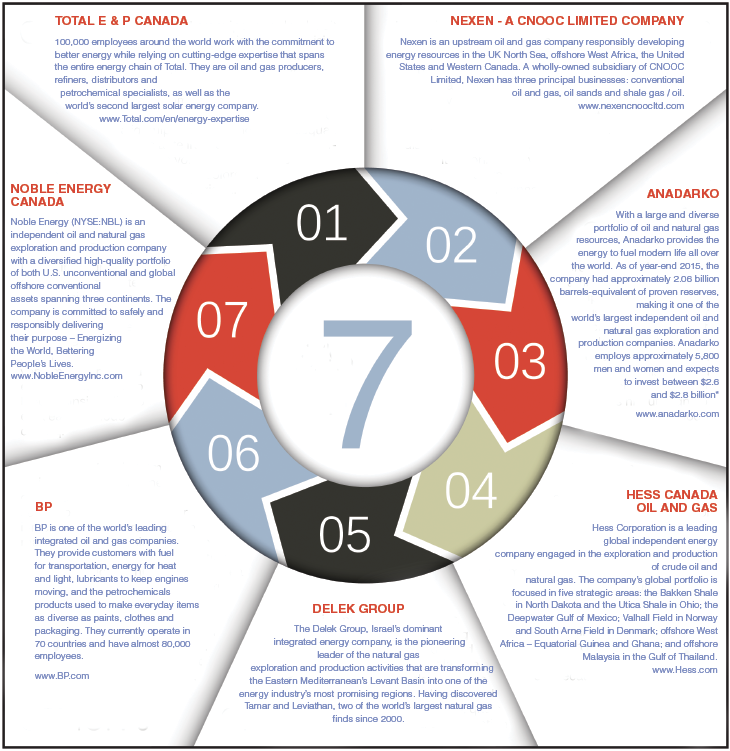Our 25th Anniversary Edition - Read Now!
View Past IssuesWhen oil giants invest in exploration in an offshore area, you know there is oil there. Yes, it is that simple. What’s not so simple is mobilising exploration rigs, crews and teams to find the oil producing sweet spot, in a seabed of possibility.
Areas like the North Sea and the Gulf of Mexico have 30-50 active oil and gas companies drilling on average 30-50 exploration wells per year. When you consider that Offshore Newfoundland is 2.5 times larger than the North Sea and two times larger than that of the Gulf of Mexico, we have extreme potential to be aligned with those exploration numbers or even exceed them. Yet the exploration scene is moving at a much slower pace, offshore Newfoundland and Labrador. Why?
It should be the very top priority of the Federal Government of Canada as well as the Provincial Government of Newfoundland and Labrador, to focus on this gap. Nalcor Energy is doing an exemplary job of seismic mapping and marketing to international oil companies that excel in offshore oil plays, but the region remains in its exploration infancy. Clearly, this is where resources and focus must be.
We’ve seen that new energy is a sustainable solution for the world. We’ve also realised that it’s oil and gas that’s going to bridge the gap to bring in new energy into a cost-efficient sustainable solution. This coupled with world oil demand, means putting oil and gas, anywhere, other than a number one priority on the list of commodity developments, is ultimately self-defeating.
In 1972, Statoil was formed, and the company is a testament to the idea that success is measured by vision and success over decades. In just 45 years, Statoil employed 23,000 people worldwide and is the major contributor to the Norwegian Fund at over 900 Billion dollars. Because of oil and gas, and the strategic oil fund, Norway is one of the richest regions in the world. The gross income per capita in Norway is approx. $66,000 per person.
Here in Newfoundland, we don’t have to re-invent the wheel, we just have to do what they have done in Norway. It is possible given Newfoundland and Labrador’s offshore exploration region is 2.5 times larger than that of the North Sea and is touted to be even more lucrative in terms of reserve potential.
This week, (Feb 2017) Statoil announced that they will be drilling two more exploration wells in the Flemish Pass Basin east of Newfoundland in late 2017.
Like many of the operators in the region, Statoil is a multi-stake holder in three of the four oil projects in the region. Statoil has a nine per cent share in the Hebron project, a five per cent share in Hibernia and a 15 per cent share in Terra Nova.
Worldwide, Statoil plans to drill about 30 exploration wells in 2017, around 30% more than last year, with more than half (16-18) targeting prospects offshore Norway. Tim Dodson, executive vice president for Exploration, said the program would be balanced between proven, well-known basins and new frontier opportunities.
What is interesting to note is that last year Statoil completed 23 exploration wells as an oil operator and partner, including 14 wells offshore Norway. This year they will drill 30% more wells, in a low oil dollar climate. This is a testament to their leadership, creativity and innovative technology. It’s that level of visionary leadership that will bridge the gap between low exploration wells numbers to higher more sustainable exploration numbers.
While most regions of the world have seen exploration and production diminishing because of oil price, work in Newfoundland and Labrador continues to move forward because of the nature of these long-term mega oil projects and extremely lucrative shows in the geology. Garnishing record-breaking land sales in 2015 and 2016, offshore Newfoundland, it is exciting to see who will find oil the fastest.
Given the lucrative perspectivity of this region, this year alone, seven new entrants have invested in the offshore oil and gas play in Newfoundland and Labrador for the exploration and development of projects. Here’s who they are:
100,000 employees around the world work with the commitment to better energy while relying on the cutting-edge expertise that spans the entire energy chain of Total. They are oil and gas producers, refiners, distributors and petrochemical specialists, as well as the world’s second largest solar energy company. www.Total.com/en/energy-expertise
Nexen is an upstream oil and gas company responsibly developing energy resources in the UK North Sea, offshore West Africa, the United States and Western Canada. A wholly-owned subsidiary of CNOOC Limited, Nexen has three principal businesses: conventional oil and gas, oil sands and shale gas/oil. www.nexencnoocltd.com
Noble Energy (NYSE:NBL) is an independent oil and natural gas exploration and production company with a diversified, high-quality portfolio of both U.S. unconventional and global offshore conventional assets, spanning three continents. The company is committed to safely delivering their purpose – Energizing the World, Bettering People’s Lives. www.NobleEnergyInc.com
With a large and diverse portfolio of oil and natural gas resources, Anadarko provides the energy to fuel modern life all over the world. As of year-end 2015, the company had approximately 2.06 billion barrels-equivalent of proven reserves, making it one of the e world’s largest independent oil and natural gas exploration and production companies. Anadarko employs approximately 5,800 men and women. www.anadarko.com
BP is one of the world’s leading integrated oil and gas companies. They provide customers with fuel for transportation, energy for heat and light, lubricants to keep engines moving, and the petrochemicals products used to make everyday items as diverse as paints, clothes and packaging. They currently operate in 70 countries and have almost 80,000 employees. www.BP.com
The Delek Group, Israel’s dominant integrated energy company, is the pioneering leader of the natural gas exploration and production activities that are transforming the Eastern Mediterranean’s Levant Basin into one of the energy industry’s most promising regions. The Delek Group has discovered Tamar and Leviathan, two of the world’s largest natural gas finds since 2000.
Hess Corporation is a leading global independent energy company engaged in the exploration and production of crude oil and natural gas. The company’s global portfolio is focused in five strategic areas: the Bakken Shale in North Dakota and the Utica Shale in Ohio; the Deepwater Gulf of Mexico; Valhall Field in Norway and South Arne Field in Denmark; offshore West Africa – Equatorial Guinea and Ghana; and offshore Malaysia in the Gulf of Thailand. www.Hess.com

_______________________________________________________________________

Tina Olivero - The OGM
Tina Olivero is the 25-year publisher and journalist with TheOGM.com.
OGM – Our Great Minds, is a leading publication that provokes thought, elevates perspective, and facilitates the advancement of our energy and our people.
To submit your articles for consideration, please send to tinaolivero@theogm.com
or use our automated portal on our website: www.TheOGM.com (U Publish It)
Tel: 709 770-0677
Did you enjoy this article?
We respect your privacy and will never share your information with third parties.